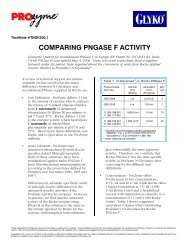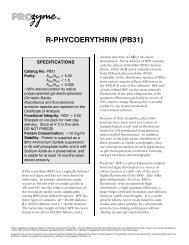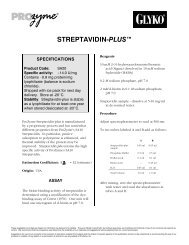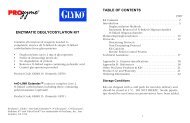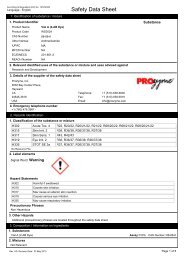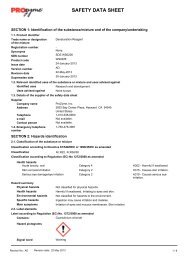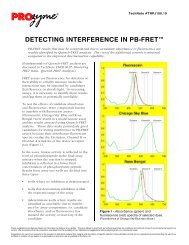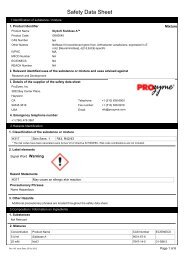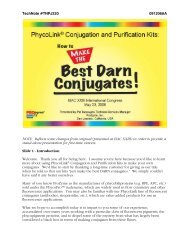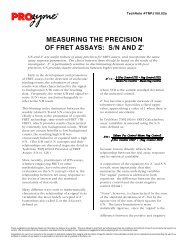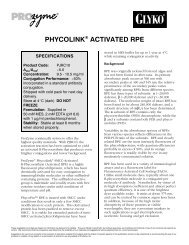FACE® N-Linked Oligosaccharide Profiling Kit - ProZyme
FACE® N-Linked Oligosaccharide Profiling Kit - ProZyme
FACE® N-Linked Oligosaccharide Profiling Kit - ProZyme
You also want an ePaper? Increase the reach of your titles
YUMPU automatically turns print PDFs into web optimized ePapers that Google loves.
6 Add 2 µl of N-Glycanase (C1) to the glycoprotein sample and Oligo <strong>Profiling</strong> Control (E4). Mix<br />
with finger flicks and centrifuge for 5 seconds. Store any remaining enzyme at 4ºC.<br />
7 Incubate for 2 hours or overnight at 37°C.<br />
8 Prepare the OLIGO Quantitation Control (E5):<br />
a. Add 300 µl of distilled water to the tube labeled E5, which contains 6 nmoles of maltotetraose.<br />
b. Resuspend the lyophilized carbohydrate by vortexing.<br />
c. The concentration of the maltotetraose is now 200 pmoles/10 µl.<br />
9 Add 10 µl (200 pmoles) of reconstituted E5 to the glycoprotein digest as an internal labeling control,<br />
or label 10 µl in a separate tube to check your quantitation according to the guidelines on page 4.<br />
Store the unused reconstituted E5 at -20°C.<br />
10 Precipitate the protein by adding 3 volumes of cold ethanol. Keep samples on ice for 10 minutes.<br />
Spin samples in microcentrifuge for 5 minutes to pellet the protein.<br />
11 Remove the supernatant and transfer to a clean 1.5 ml microcentrifuge tube.<br />
DO NOT DISCARD THE SUPERNATANT; the released carbohydrates are present in the<br />
supernatant.<br />
12 If a large amount of protein was digested (>250 µg), 5-10% of the released oligosaccharides may<br />
remain in the pellet. The recovery of these oligosaccharides can be accomplished by drying the<br />
pellet completely in a centrifugal vacuum evaporator or lyophilizer. Add 50 µl water to resuspend,<br />
then 150 µl of cold ethanol and precipitate on ice. Centrifuge and combine the supernatants.<br />
13 Dry supernatants in a centrifugal vacuum evaporator or lyophilize to a translucent pellet.<br />
At this point samples may be stored at -20°C, or proceed with the fluorophore labeling procedure<br />
described in Section 2.<br />
Page 10



